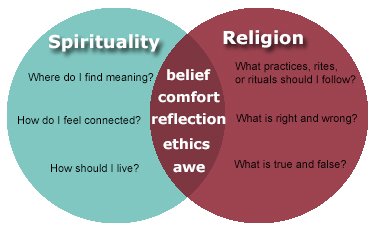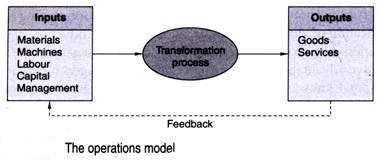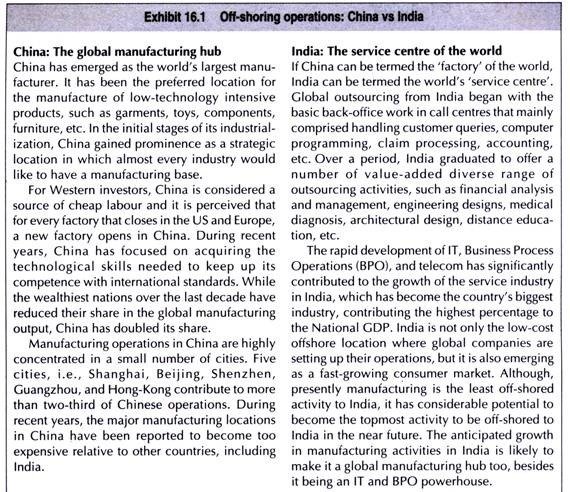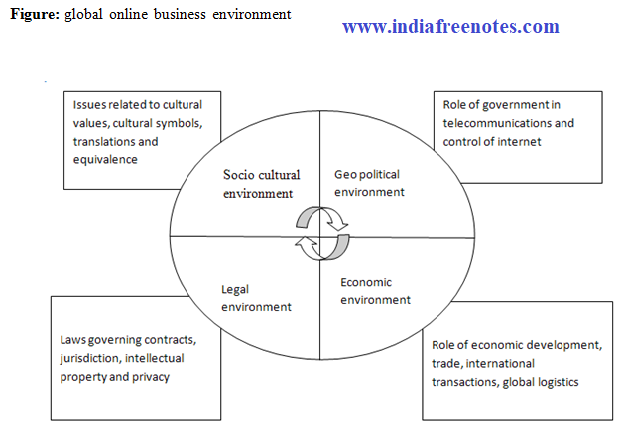International human resource management (IHRM) is the process of procuring, allocating, and effectively utilizing human resources in a multinational corporation. If the MNC is simply exporting its products, with only a few small offices in foreign locations, then the task of the international HR manager is relatively simple.
However, in global firms human resource managers must achieve two somewhat conflicting strategic objectives. First, they must integrate human resource policies and practices across a number of subsidiaries in different countries so that overall corporate objectives can be achieved.
Pulapa Subba Rao defines international human resource management as, performing HRM and its related activities and arranging for related and necessary immigration facilities for prospective and current expatriate employees, by organizations operating in domestic and/or foreign countries.
Need of International Human Resource Management
HRM activities are performed in a particular context. It implies that either different HRM activities may be required in a global firm as compared to the domestic firm or even if the HRM activities remain the same, there may be difference in the way of performing these activities.
There are four major contextual variables because of which HRM activities in a global firm differ from a domestic firm, hence the need for international HRM. These are cultural diversity, workforce diversity, language diversity, and economic diversity. Let us go through these variables and see how they affect HRM practices.
-
Cultural Diversity
Culture of a country is one of the key factors which affect people-oriented processes, and HRM is a people-oriented process. Therefore, culture of a country has very significant impact on HRM practices. When we consider global perspective of HRM, we find cultural diversity along the globe, that is, cultures of two countries are not alike.
Cultural diversity exists on five dimensions- individualism versus collectivism, power orientation, uncertainty avoidance, masculinity versus femininity, and time orientation. Let us see how these dimensions affect human behaviour and, consequently, work practices.
(a) Individualism versus Collectivism
People differ in terms of individualism and collectivism. Individualism is the extent to which people place value on themselves; they define themselves by referring themselves as singular persons rather than as part of a group or organization. For them, individual tasks are more important than relationships. Collectivism is the extent to which people emphasize the good of the group or society.
They tend to base their identity on the group or organization to which they belong. Countries that value individualism are USA, Great Britain, Australia, Canada, Netherlands, and New Zealand. Countries that value collectivism are Japan, Columbia, Pakistan, Singapore, Venezuela, and Philippines.’ India may be placed near to collectivism.
(b) Power Orientation
Power orientation, also known as orientation to authority, is the extent to which less powerful people accept the unequal distribution of power; people prefer to be in a situation where the authority is clearly understood and lines of authority are never bypassed. On the other hand, in a culture with less orientation to power, authority is not as highly respected and employees are quite comfortable circumventing lines of authority to accomplish jobs.
(c) Uncertainty Avoidance
Uncertainty avoidance, also known as preference for stability, is the extent to which people feel threatened by unknown situations and prefer to be in clear and unambiguous situations. In many countries, people prefer unambiguity while in many other countries, people can tolerate ambiguity.
(d) Masculinity versus Femininity
Masculinity or femininity, also known as degree of assertiveness or materialism, is the extent to which the dominant values in a society emphasize aggressiveness and the acquisition of money and material goods, rather than concern for people and overall quality of life. In societies having masculinity characteristics, more emphasis is placed on ego goals such as career, money, etc., while in societies having femininity characteristics, more emphasis is placed on social goals such as relationships, helping others, etc.
(e) Time Orientation
Time orientation dimension divides people into two categories- long- term orientation and short-term orientation. People having long-term orientation focus on future, prefer to work on projects having a distant payoff, and have persistence and thrift. People having short-term orientation are more oriented towards past and present and have respect for traditions and social obligations.
The basic implication of cultural diversity is that same set of HRM practices is not suitable for all cultures; consideration has to be given about matching HRM practices with cultural characteristics of the countries concerned.
-
Workforce Diversity
Workforce diversity is increasingly becoming common for large organizations even for domestic ones. However, in a global firm, additional workforce diversity emerges because of hiring personnel from different countries.
A typical global firm may draw its employees from three types of countries — home country (PCNs), host country (HCNs), and third country (TCNs). In a global firm, workforce diversity can also be seen in the context of employee mobility from one country to another country for performing jobs.
On this basis, an employee can be put in one of the following categories:
- Expatriate: A parent country national sent on a long-term assignment to the host country operations.
- Inpatriate: A host country national or third country national assigned to the home country of the company where it is headquartered.
- Repatriate: An expatriate coming back to the home country at the end of a foreign assignment.
Workforce diversity implies that various categories of employees not only bring their skills and expertise but also their attitudes, motivation to work or not to work, feelings, and other personal characteristics. Managing such employees with pre-determined HRM practices may not be effective but contingency approach has to be adopted so that HRM practices become tailor-made.
-
Language Diversity
Language is a medium of expression but employees coming from different countries have different languages. Though English is a very common language, it does not serve the purpose adequately as it does not cover the entire world. While employees coming from different countries may be encouraged to learn the language of the host country for better dissemination of the information, it does not become feasible in many cases.
An alternative to this is to send multilingual communications. It implies that anything transmitted to employees should appear in more than one language to help the message get through. While there are no hard- and-fast rules in sending such messages, it appears safe to say that such a message should be transmitted in the languages the employees understand to ensure adequate coverage.
-
Economic Diversity
Economic diversity is expressed in terms of per capita income of different countries where a global company operates. Economic diversity is directly related to compensation management, that is, paying wages/salaries and other financial compensation to employees located in different countries.
One of the basic principles of paying to employees is that “there should be equity in paying to employees.” However, putting this principle in practice is difficult for a global company because its operations are located in different countries having different economic status. In such a situation, some kind of parity should be established based on the cost of living of host countries.
Diversity of various types in a global firm suggests that HRM practices have to be tailor- made to suit the local conditions.
Recruitment Policy of International Human Resource Management
Companies operating outside their home countries, essentially, follow three ways of hiring executives:
-
Ethnocentrism
It is a cultural attitude marked by the tendency to regard one’s own culture as superior to others. Sending home country executives abroad – thinking that they will be able to deliver the goods – may be an appropriate strategy in the initial stages of expanding company operations worldwide as these officials know what to do immediately. At Royal Dutch Shell, for instance virtually all financial controllers around the world are Dutch nationals.
Often the other reasons advanced for ethnocentric staffing policies include- lack of qualified host country managerial talent, a desire to have a unified corporate culture, tight control and the keenness to transfer the parent company’s core competencies (say, a specialised design skill) to a foreign subsidiary more expeditiously.
However, a policy of ethnocentrism is too narrow in its focus and may evoke strong negative reactions from local executives whose upward mobility is blocked.
There is also no guarantee that the expats will win over the hearts of local employees and offer positive contributions. In fact, failures of US expats range from 10% to 15%. European and Japanese expat failures are equally alarming, the costs of each such failure running to several thousands of dollars.
Too often expats are selected on the strength of their domestic track record. They are posted abroad without requisite cross-cultural training. The family factors stand completely discounted in the selection process. The rate of failures could be drastically reduced if these issues are properly addressed.
-
Polycentrism
In the polycentric corporation, there is a conscious belief that only host country managers can ever really understand the culture and behaviour of the host country market; therefore, the foreign subsidiary should be managed by local people. The home-office headquarters, of course, is staffed by parent-country nationals.
Hiring nationals has many advantages. It eliminates language barriers, expensive training periods, cross-cultural adjustment problems of managers and their families.It also permits the firms to attract talented locals by offering an attractive compensation package. Many western MNCs have found that the key to success on foreign soil is to employ local people.
Analog Devices Inc. has achieved global success in a highly technical field by picking up local managers, training them extensively and then empowering them to hire and manage more local talent. Likewise, global sales of Bausch & Lomb improved dramatically after putting the local managerial talent to good use.
-
Geocentrism
Geocentrism assumes that management candidates must be searched on a global basis, without favouring anyone. The best manager for any specific position anywhere on the globe may be found in any of the countries in which the firm operates. Such a staffing policy seeks the best people for important jobs throughout the organisation, regardless of nationality. It helps to build a stronger and more consistent culture and set of values among the entire global management team.
‘Team members here are always interacting, networking and building bonds with each other, as they move from assignment to assignment, around the globe and participate in global development activities’. Colgate-Palmolive is an example of a company that hires the best person for the job regardless of nationality. It has been operating globally for more than 55 years, and its products are household names in more than 175 countries.
Fully 60 per cent of the company’s expatriates are from countries other than the Unites States and two of its last four CEOs were not US nationals. Moreover, all the top executives speak at least two languages and important meetings routinely take place all over the globe.
Challenges of International Human Resource Management
According to P. V. Morgan, International HRM is the result of an interplay among the three dimensions human resource activities, types of employees and countries of operation. The complexities of operating in various countries and employing different national categories of workers is an important variable that differentiates domestic and international HRM, rather than any major differences between HRM activities performed.
Broadly stated, IHRM is “the process of procuring, allocating and effectively utilising human resources in a multinational corporation “. When compared to domestic human resources management, the scope of IHRM is very wide.
For example, while compensating people in India, the American MNC must keep in mind the expectations of locals, the competitor’s compensation structure, taxation problems of repatriates, TCN’s aspirations and a host of other issues that have a bearing on the psyche of employees possessing different skills and having different cultural backgrounds (both within and outside the country).
IHRM, thus, requires a much broader perspective, encompasses a greater scope of activities and is subject to much greater challenges than is domestic HRM.
Like this:
Like Loading...







